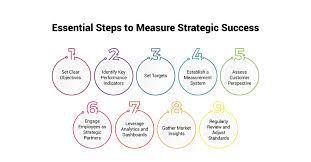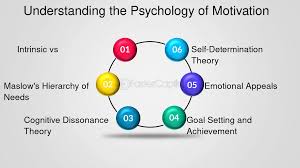In the dynamic world of business, success is rarely accidental. Behind every thriving company lies a series of smart decisions, calculated risks, and — most importantly — effective strategies. Whether you’re launching a start-up, managing a small business, or leading a multinational corporation, understanding and implementing the right business strategies can make the difference between growth and failure.
At Study Rhino, we believe in simplifying complex ideas for students and young entrepreneurs. In this article, we explore the key business strategies that have consistently driven success across industries.
- Clear Vision and Mission
A business must know where it’s going and why it exists. A strong vision statement outlines long-term aspirations, while a mission statement focuses on the company’s purpose and approach to reach those aspirations.
Why it matters:
- Provides direction to the company.
- Motivates employees by connecting them to a bigger purpose.
- Builds trust with customers and investors.
Example:
Tesla’s vision is “to create the most compelling car company of the 21st century by driving the world’s transition to electric vehicles.”
- Understanding the Market
No business operates in a vacuum. Researching the market — knowing customer needs, industry trends, and competitor moves — is crucial for staying relevant.
How to achieve this:
- Conduct surveys and focus groups.
- Analyze competitors (SWOT Analysis: Strengths, Weaknesses, Opportunities, Threats).
- Monitor market trends and emerging technologies.
Real-life application:
Netflix continuously studies audience preferences, helping it transition from DVD rentals to streaming and then into original content production.
- Customer-Centric Approach
Today’s businesses must be customer-obsessed, not product-obsessed. Listening to customers, personalizing experiences, and delivering value beyond the transaction is essential.
Strategies include:
- Personalizing services and communications.
- Offering outstanding customer support.
- Seeking feedback and acting on it.
Tip: Businesses that focus on solving customer problems often outperform those that simply push products.
- Innovation and Adaptability
In a fast-paced global economy, innovation and adaptability are not optional — they are survival tactics. Successful businesses anticipate changes and adapt their models accordingly.
Ways to foster innovation:
- Encourage a culture of creativity within teams.
- Invest in research and development (R&D).
- Stay open to pivoting business models when necessary.
Case in point:
Amazon started as an online bookstore but quickly adapted into a global e-commerce and cloud computing giant.
- Building a Strong Brand
A strong brand identity creates emotional connections, improves customer loyalty, and can justify premium pricing.
Building blocks of a strong brand:
- Clear and consistent messaging.
- High-quality customer experiences.
- Visual elements like logo, color scheme, and design.
Remember:
People don’t just buy products; they buy stories, emotions, and values.
- Effective Leadership
Behind every successful business is a leader who inspires, empowers, and drives the organization forward.
Key leadership skills:
- Communication: Clear, honest, and inspiring.
- Decision-making: Quick yet informed decisions.
- Emotional intelligence: Understanding and managing your own emotions and those of others.
Quote:
“Leadership is not about being in charge. It’s about taking care of those in your charge.” — Simon Sinek
- Strategic Financial Management
No business can succeed without strong financial control. Budgeting, forecasting, managing cash flow, and investing wisely are essential components.
Best practices:
- Maintain detailed financial records.
- Avoid unnecessary debt.
- Regularly review financial performance.
Advice:
Profitability isn’t just about making sales — it’s about managing costs and maximizing margins.
- Talent Acquisition and Team Building
A business is only as strong as its people. Hiring the right talent and fostering a positive work environment are critical strategies.
What works:
- Recruit for both skill and cultural fit.
- Offer professional development opportunities.
- Foster a collaborative and respectful workplace culture.
Insight:
Companies like Google and Microsoft invest heavily in employee well-being because they know happy employees = higher productivity.
- Leveraging Technology
Technology is a powerful enabler of efficiency, innovation, and competitive advantage.
Areas where technology boosts business:
- Automating repetitive tasks.
- Enhancing communication and collaboration.
- Improving customer service through AI and chatbots.
- Analyzing big data for better decision-making.
Pro Tip:
Stay updated with technological trends, but don’t adopt new tech blindly — ensure it aligns with your business needs.
- Sustainable and Ethical Practices
Today’s consumers prefer businesses that operate ethically and sustainably. Being socially responsible is not just “nice to have” — it’s a competitive advantage.
Sustainability practices:
- Reducing carbon footprint.
- Ethical sourcing of materials.
- Fair labor practices.
Why it matters:
Consumers are more likely to support brands that align with their values, and employees prefer working for companies with strong ethical commitments.
- Strategic Partnerships and Networking
Sometimes, collaboration outshines competition. Forming strategic partnerships can help businesses access new markets, share resources, and enhance credibility.
Effective partnerships involve:
- Mutual benefits and clear goals.
- Strong communication and trust.
- Flexibility and willingness to adapt over time.
Example:
Starbucks partnered with PepsiCo to distribute bottled coffee drinks, expanding its market reach significantly.
- Risk Management
Every business faces risks — financial, operational, legal, and reputational. Smart companies proactively identify potential risks and have contingency plans.
Steps in risk management:
- Identify and assess risks.
- Develop strategies to minimize them.
- Regularly update risk assessments.
Lesson:
Planning for the worst prepares you to survive and even thrive when challenges arise.
- Focus on Core Competencies
Rather than trying to do everything, businesses should focus on what they do best — their core competencies.
Benefits:
- Stronger brand identity.
- Higher customer satisfaction.
- Efficient resource allocation.
Example:
Apple focuses on sleek, user-friendly technology and design — and outsources parts of its supply chain.
- Global Thinking with Local Action
While globalization opens up vast opportunities, successful businesses think globally but act locally. They adapt products and marketing strategies to fit local cultures, customs, and regulations.
Approach:
- Localize branding and communication.
- Understand local consumer behavior.
- Respect cultural differences.
Case study:
McDonald’s adapts its menu according to local tastes, offering the McAloo Tikki in India and Teriyaki Burgers in Japan.
- Continuous Learning and Improvement
Finally, the best businesses never settle. They embrace a culture of continuous learning, always seeking ways to improve.
How to nurture continuous improvement:
- Regularly solicit feedback from employees and customers.
- Review processes and outcomes.
- Celebrate successes but also analyze failures without blame.
Motto to remember:
“Good enough” is never good enough in the long run.
Conclusion
Success in business is not guaranteed, but adopting key strategies greatly increases the odds. Whether it’s building a strong brand, staying customer-focused, investing in technology, or fostering continuous improvement, the most successful companies blend multiple strategies tailored to their goals and environments.
At Study Rhino, we encourage students, entrepreneurs, and business leaders alike to think strategically, act ethically, and always stay adaptable. After all, in business — as in life — the only constant is change.
Stay curious. Stay smart. Succeed with Study Rhino!




